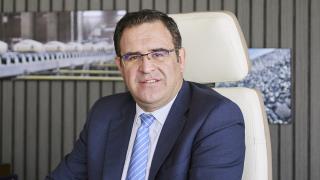Since 2000 the Limak Cement Group has evolved from owning a single cement plant to becoming Turkey’s second-largest producer in terms of clinker capacity. CEO and Board member of the Limak Holding arm since its inception, Gültekin Aksüyek, speaks with ICR about ongoing investments in Turkey, plus expansion into international markets with new plants under construction and potential projects on the table.
ICR: Limak Holding is a diversified Turkish conglomerate with interests in infrastructure, transport and tourism. How long has the group been active in the cement sector and how did the company grow to become a leading domestic player?
Gültekin Aksüyek (GA): Limak’s journey in the cement sector started with the acquisition of the Siirt Kurtalan cement plant in 2000. The Ergani and Gaziantep cement plants were acquired through asset sales from the Savings Deposit Insurance Fund in 2006, and the Urfa cement plant was acquired in 2007 from the Türkerler Group.
Limak further enhanced its competitive position in the eastern part of Turkey via two greenfield investments: Bitlis (2008) and Mardin-Derik (2009). The year 2011 was pivotal for Limak Cement as it included the acquisition of four cement plants (Ankara, Balıkesir, Trakya and Ambarlı) and 12 ready-mixed concrete facilities from Set-Italcementi that enabled Limak Cement to position itself geographically as a well-diversified group across Turkey.
In addition, rehabilitation, capacity enhancement, modernisation and energy efficiency works were carried out in all plants.
Today, Limak has become the second-largest cement group in Turkey in terms of its clinker capacity. The group has ambitious plans to further enhance its market position in Turkey and there are new overseas investments in the pipeline that will lead the way for the company to become a global player.
